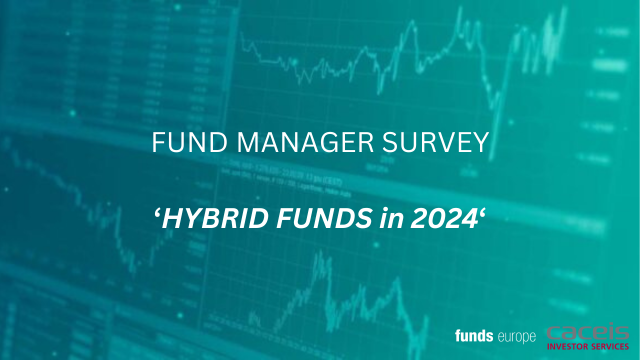Greater portfolio transparency and the use of structured credit strategies in fixed income ETFs are observable in the U.S., according to Tony O’Brien of U.S. Bank.
For an idea of how European ETF products will develop in the next few years, firms are well advised to look at the U.S. The trend towards active ETFs that began over the Atlantic is well underway in Europe. But the U.S. is also seeing more structured credit strategies in fixed income ETF products, as well as an increase in single-share ETFs.
“Sooner or later, market developments in the U.S. inevitably find their way to Europe in some shape or form,” says Tony O’Brien, the Dublin-based chief commercial officer at U.S. Bank – an award-winning fund servicer and part of U.S. Bancorp, a wider financial services company.
“For example, we’ve seen options being employed by ETF issuers in the U.S. as part of so-called ‘defined outcome’ strategies, and I think we’ll see more of this in Europe. Defined outcome strategies are very helpful for insurers to manage their policyholder liabilities,” he says.
Structured credit portfolios – including CLOs, or collateralised loan obligations where investors can invest in pools of debt from different issuers – might be “difficult” to put into a UCITS structure, and single-share ETFs might be “impossible”, says O’Brien. But these are developments U.S. Bank is seeing among their client base in the U.S., which numbers around 500 ETF products.
A single-share ETF – for example, in Apple or Amazon – will offer two or three-times leverage on the underlying stock, while a single-share “inverse” ETF can be used to benefit from a fall in a company’s share price, in effect shorting it.
“These products already exist in Europe and use special purpose vehicles rather than UCITS as the delivery mechanism,” says O’Brien. “But based on what we’re seeing in the States, I’m certain we’ll see even more of them here over the next year or two.”
Expanded distribution
Driven by U.S. clients who wanted to expand their distribution overseas and into the EU, U.S. Bank launched its European fund servicing operations in Dublin in 2013 with the acquisition of a boutique-level, high-touch administrator. Today, with expanded operations in Ireland and Luxembourg, their continued commitment to service quality helps set them apart in a competitive field.
At the leading edge of U.S. Bank’s ETF service offering is ICE ETF Hub – a front-end, order-entry system that connects advisers, authorised participants and other service providers. O’Brien says the system offers unique functionality for order entry and for creating ETFs from customised baskets of securities.
The firm also offers industry-leading fund accounting and transfer agency systems that underpin and manage data flow from order entry through to NAV calculation.
Focused distribution
Even if some successful products in the U.S. prove hard to replicate under EU regulations, that might not be the case for distribution strategies. Clients, he says, are setting up “ETF families” that form-focused distribution channels, for example, for ESG or sharia investing.
Some managers are finding a niche in particular strategies or themes and finding success by delivering ETFs based on those themes through innovative platforms. These can be self-directed and fronted by an app or through products such as multi-series trusts, a model allowed under the Securities Act of 1933, which governs how securities are offered.
Portfolio transparency
Well before structured credit or single-share ETFs take off in Europe, it’s likely that the rise of active ETFs will be the single most powerful trend to arrive from the U.S. Morningstar showed that active ETFs achieved a 14% organic rate of growth globally in the first half of 2023, while passive ETFs grew only 3%.
Active ETFs bring greater pressure for European issuers to be transparent about their ETF portfolios, certainly if they want to compete with the U.S. firms that dominate the European ETF landscape.
O’Brien says U.S. ETF managers are not so protective of the “secret sauce” in their active portfolios.
“They’re happy to show their portfolio to the market, and European issuers will have to become just as comfortable with this transparency.”
U.S. Bank Global Fund Services (Ireland) Limited is registered in Ireland, Company Number 413707. Registered Office at 24 – 26 City Quay, Dublin 2, Ireland. Directors: Eimear Cowhey, Ken Somerville, Brett Meili (USA), James Hutterer (USA), Hosni Shadid (USA). U.S. Bank Global Fund Services (Ireland) Limited is regulated by the Central Bank of Ireland.
U.S. Bank Global Fund Services (Guernsey) Limited is licensed under the Protection of Investors (Bailiwick of Guernsey) Law, 2020, as amended, by the Guernsey Financial Services Commission to conduct controlled investment business in the Bailiwick of Guernsey.
U.S. Bank Global Fund Services (Luxembourg) S.a.r.l. is registered in Luxembourg with RCS number B238278 and Registered Office: Floor 3, K2 Ballade, 4, rue Albert Borschette, L-1246 Luxembourg . U.S. Bank Global Fund Services (Luxembourg) S.a.r.l. is authorised and regulated by the Commission de Surveillance du Secteur Financier.
© 2023 funds europe





